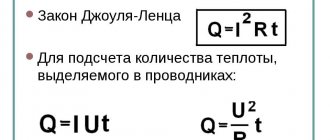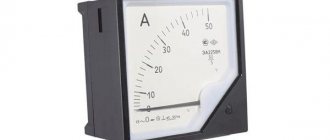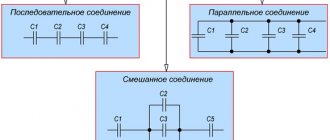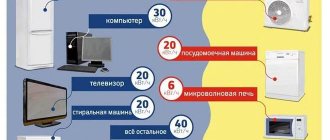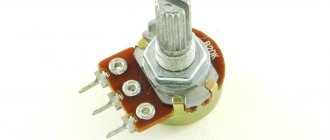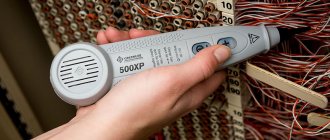Accuracy Rates
One of the main characteristics of a device for electrical measurements is its accuracy class. There are several of them. And it is determined depending on the permissible error limit caused by the design features of a single device.
The accuracy of electrical measuring instruments cannot be equal to the relative or absolute error. The latter is not a determinant of accuracy, but the relative one has a dependence on the value of the quantity that has undergone a change, that is, it will have different values for different sections of the scale.
Therefore, the reduced error (ɣ) is used to characterize the accuracy of an electrical device. It is determined by the ratio of the absolute error of a specific device (∆x) to the maximum (or limit) of the measured value (xpr). The resulting value, expressed as a percentage, will be the accuracy class of a particular device:
Any electrical measuring device must have an indication of its accuracy class on the scale. According to GOST, it can be 0.05, 0.1, 0.2, 0.5, 1.0, 1.5, 2.5 and 4.0. On this basis, devices can be classified as follows:
- accuracy class 0.05 and 0.1 - exemplary, used for checking precision instruments (for example, laboratory ones);
— accuracy class 0.2 and 0.5 – laboratory, used in laboratories for making measurements and checking technical instruments;
— accuracy class 1.0, 1.5, 2.5 and 4.0 – technical, used for technical measurements.
How digital meters work
Digital electrical measuring instruments have a high accuracy class (the error varies from 0.1 to 1.0%) and a wide measurement range. They are fast and can work together with electronic computers, which makes it possible to transmit measurement results without any distortion over various distances.
These devices are considered comparative and direct evaluation devices. Their work is based on the principle of converting the measured value into code, thanks to which the user has a digital representation of information. What other electrical measuring instruments are considered digital? These are devices that, when measuring a continuous electrical quantity, automatically convert it into a discrete one, encode it and provide the result in a digital form that is convenient for the user to read.
JSC "NII Elektromera"
65 years ago, according to the Resolution of the Council of Ministers of the USSR, VNIIEP - the All-Union Scientific Research Institute of Electrical Measuring Instruments was founded. In addition to research work on the development of the latest equipment, small series of high-precision, unique instruments were manufactured here. While developing systems of electrical measuring instruments designed to automate experiments and industrial testing of complex equipment, the institute created measuring and control complexes.
At the end of the last century, VNIIEP was transformed into JSC NII Elektromera.
Types of thermocouples
The International European Standard provides tables and characteristics for electric thermocouples made of various combinations of metals. In Russia, similar standards have not yet been developed.
According to the method of operation, there are varieties:
- measuring by immersion;
- working superficially.
Thermoelements are manufactured without a casing, with steel, heat-resistant, porcelain covers, with insulation made of refractory metal.
Thermal devices are distinguished by design:
- with movable and fixed fitting and flange,
- with a regular, waterproof head;
- with termination of leads without a head.
They produce thermoelements protected and unprotected from aggressive environments. There are varieties that operate under high pressure and are non-sealed, resistant to vibration, shock, and simple.
Chromel-alumel (TCA)
characteristics :
- long-term determines temperature indicators up to +1100°C, simultaneously - +1300°C;
- used to determine low values (up to -200°C);
- sensitivity about 40 µV/°C;
- used in reactors for irradiation.
The disadvantage is the strong sensitivity to mechanical deformation of the electrodes and the instability of thermo-EMF, which is reversible.
The positive electrode is made of chromel, the negative - alumel.
Chromel-copel (TCC)
The most sensitive thermocouples, their value exceeds 81 µV/°C at temperatures greater than +200°C. The meter has high thermal stability.
Features of the Chromel-Kopel thermocouple:
- measures indicators in acidic and inert environments;
- Operated at a temperature of +800°C continuously, used for a short time at +1100°C;
- the lower limit is -253°C.
It shows the greatest stability at values not exceeding +600°C. Thermocouples are often used in scientific laboratories, and thermocouples are successful at measuring small differences in temperature.
Iron-constatan (ILC)
They are used in industry in reducing and oxidizing environments, vacuum, and are recommended for coordinating simultaneously negative and positive temperatures.
Properties of the iron-constatan thermocouple:
- measures values in the range -203° - +1100°C (short-term), +750°C (long-term);
- not used to control only negative temperatures;
- sensitivity - at the level of 50 - 65 µV/°C.
The disadvantage is that the thermocouple shows incorrect values when the conductors are deformed. Iron electrodes have low resistance to corrosion.
The material of positive thermoelements is low-carbon iron, and the material of negative thermoelements is constantan (an alloy of nickel and copper).
Tungsten-rhenium (TVR)
Works in helium, hydrogen, nitrogen environment or without gases (in vacuum). They have proven themselves well under high heat and sudden temperature changes. Characteristics of tungsten-rhenium pairs:
- measure indicators in the range -1300° - +3000°C;
- thermal EMF - within 22 - 34 mV for electrodes made of various alloys;
- sensitivity 4 – 10 µV/°C.
The elements are durable, successfully cope with alternating loads, and do not become dirty. The disadvantage is sensitivity to radiation, its decrease at levels above +2400°C.
Tungsten-molybdenum (TMM)
Measurements are carried out in a vacuum, hydrogen or inert environment without oxidizing impurities. The thermocouple is cheaper than all other thermal sensor options for detecting high temperatures.
Features of the tungsten-molybdenum pair:
- constantly works at -1400° - +1800°C, briefly used at +2400°C;
- sensitivity - 6.5 µV/°C in these temperature ranges.
Durable thermoelectrodes are inert to chemical attack.
Disadvantage: weak reproduction of thermo-emf, polarity inversion. With strong, prolonged heating, brittleness occurs as oxidation occurs.
With ceramic protection of the electrodes and the presence of caps, it functions in an acidic environment and liquid metals.
Platinorhodium-platinum (TPP)
Thermocouples are made from an alloy of platinum with rhodium (10 or 13%) and platinum. Used for control under inert and acidic conditions. Characterized by accurate values, high reproducibility and constant thermo-EMF.
Properties of the PP thermocouple:
- The operating temperature of continuous measurements is -600° - +1400°C, used for a short time at +1600°C;
- show sensitivity at 10 – 12 µV/°C at 10% rhodium, 11 – 14 µV/°C (13%).
The disadvantages are the variability of accuracy at a high degree of irradiation; in addition, such elements are expensive. Thermocouples must be protected from metal and chemical dirt during manufacture and operation.
Platinorhodium-platinumrhodium (PPR)
The thermocouple is used to find the temperature in a neutral and acidic environment, as well as in a vacuum. The pair is mounted without long conductors because it has low sensitivity at 0° - 100°C.
Features and characteristics of thermocouple PR:
- works when heated to +1600°C (continuously), up to +1800°C (short-term);
- sensitivity 10.5 – 11.5 µV/°C at readings above +1200°C.
The thermoelement shows greater strength and stability at high temperatures; the electrodes are not subject to graininess, brittleness during temperature changes, and are not prone to the accumulation of dirt on the surface. They are used in glass melting, cement making, metallurgy, and the production of refractory materials.
Connection diagram
For remote connections, compensation and extension wires are used. The latter choose the same material as the thermocouple electrodes, but a different diameter is allowed. Compensation ones, on the contrary, are made from alloys with opposite properties.
Thermal meters are connected using two methods :
- simple - the converter is connected directly to the electrodes;
- differential - use 2 conductors with different emfs, welded at the ends, while the converter is placed in the gap of one conductor.
Mounted so that there is no spatial tension of the conductors and vibration.

